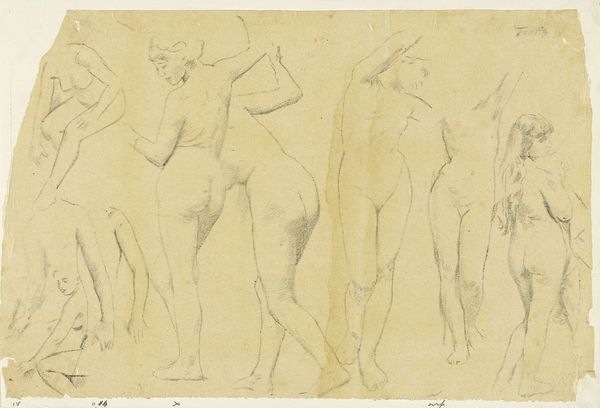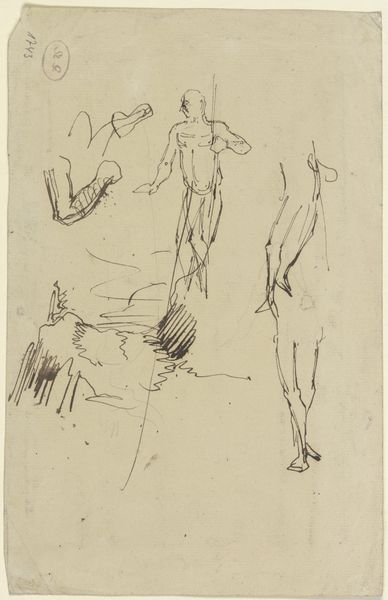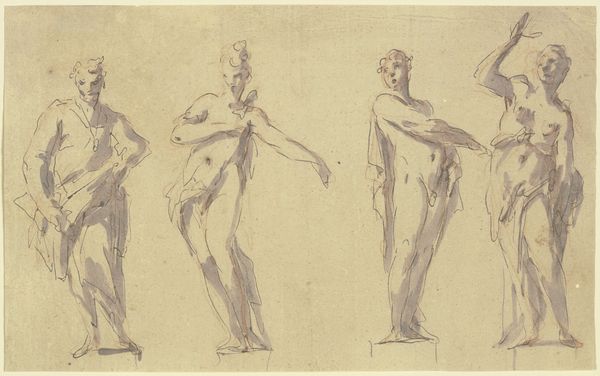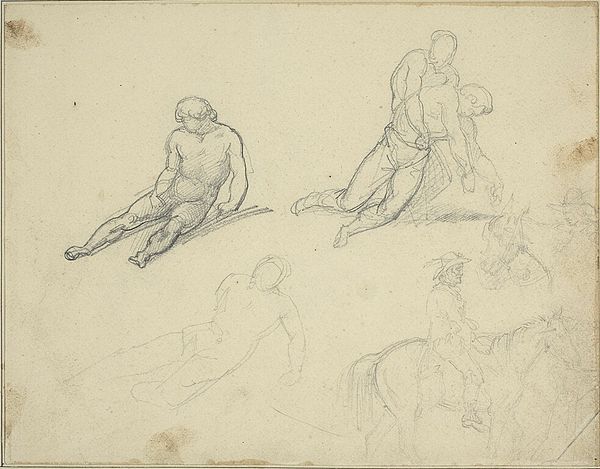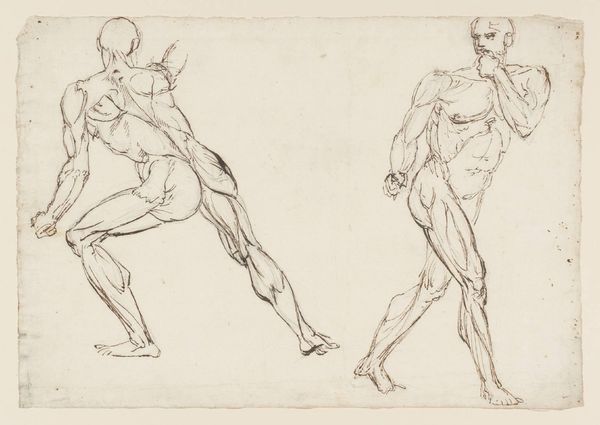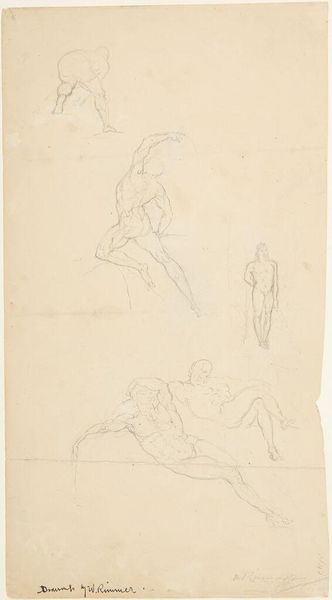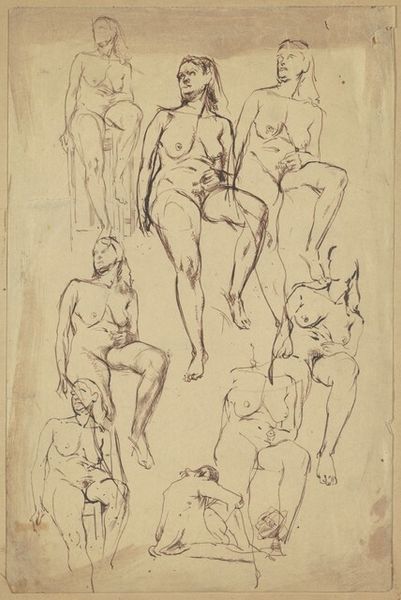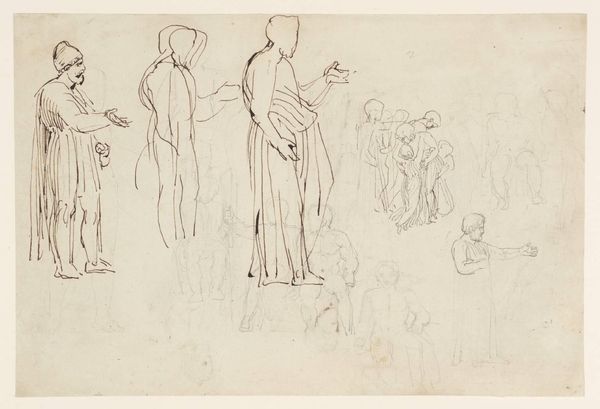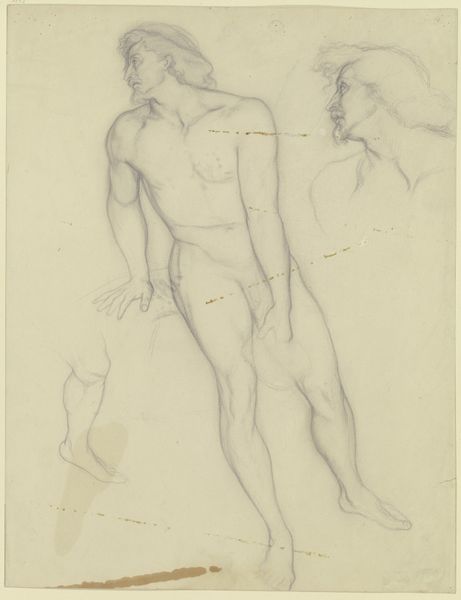
drawing, pencil
#
portrait
#
drawing
#
classical-realism
#
figuration
#
pencil
#
history-painting
#
academic-art
#
nude
Dimensions: 11 1/2 x 16 3/4in. (29.2 x 42.5cm)
Copyright: Public Domain
Curator: So, we're looking at a pencil drawing titled "Nude Study," created sometime between 1800 and 1830, currently residing at the Metropolitan Museum of Art. It’s by an anonymous artist. Editor: Right away, it feels almost like a fragmented dreamscape of musculature. An academic exercise, but rendered with such a delicate hand it becomes almost…ethereal? Curator: Absolutely. These types of academic studies, common during that period, were foundational to mastering classical realism and history painting. They are about understanding human anatomy not just scientifically, but also for its expressive potential within a narrative. The nude figure has always carried heavy symbolic weight. Editor: It’s interesting because the anonymity of the artist shifts that weight a bit, doesn’t it? It’s no longer about personal expression, but almost like an archetypal form being dissected and understood. It feels strangely intimate but also distant. There's no gaze returned. Curator: That distance underscores the historical and academic nature of the piece. Nude figures were, and are, imbued with power and often employed to represent allegorical or historical virtues or vices. The focus here seems less on portraying an individual and more on dissecting ideal forms that could be deployed in a larger narrative composition. Editor: Yes, you see the legacy of Ancient Greece in how it evokes ideas of ideal beauty. Still, there’s something incredibly human and fragile about a drawing that feels like a whispered secret from art school. All those sketches overlapping give a wonderful texture to the whole work. Curator: And we shouldn't overlook the significance of the drawing medium itself. Pencil allows for incredible precision and subtlety in capturing the contours and musculature. It also lends an immediate quality, connecting us directly to the artist's hand and the process of observation and transcription. These artists aimed to communicate a shared understanding of human form passed down by classical art. Editor: It almost feels like spying on the artistic process itself, the underpinnings of these grand history paintings, distilled into pure form and line. And like every successful artwork, this resonates far beyond art history; in it, I witness art as a means to explore and express a much grander humanistic narrative. Curator: Well, looking at it this way, you might just have something! Editor: That’s how art works, or is supposed to anyway!
Comments
No comments
Be the first to comment and join the conversation on the ultimate creative platform.
